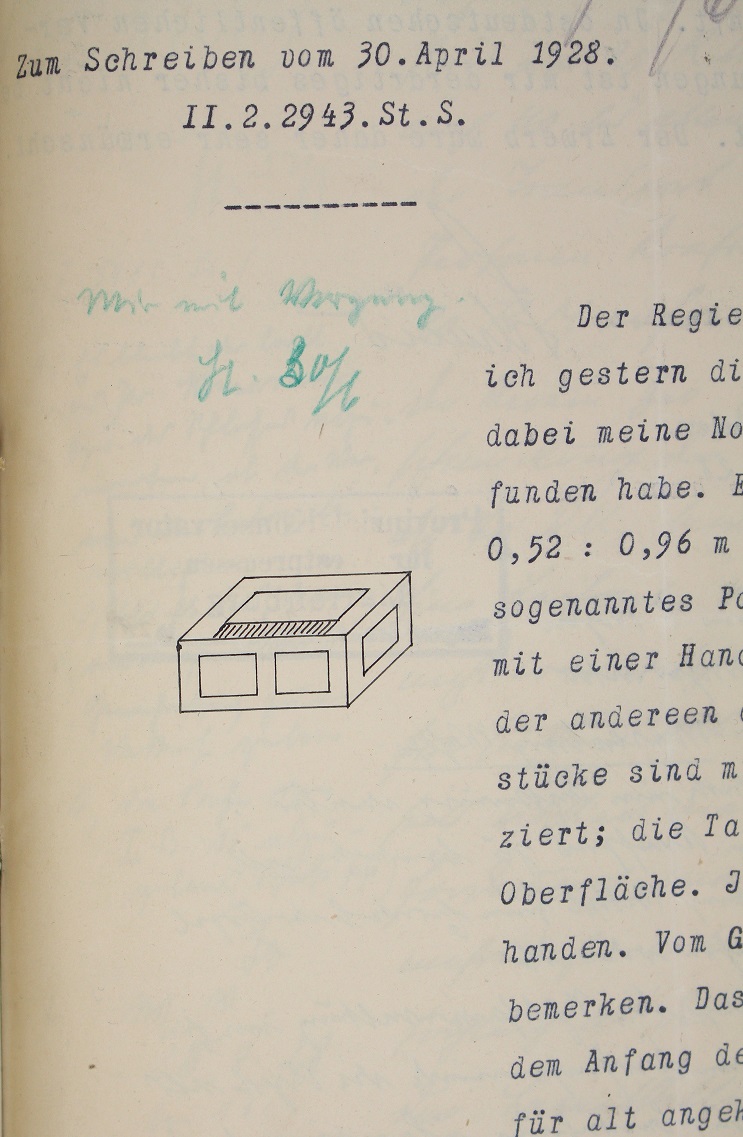author: Daniel Nitrowski (attributed); Jacobus Sadlicki (?)
place of creation: Duke of Prussia; Ilawa (?)
time of creation: approx. 1680-1700
technique: carpentry, woodcarving, convening
material: wood (oak, ebony), tin, iron, animal bone
dimensions (positive without the box): length 96 cm, height 48 cm; main 52 cm
disposition: 4 voices divided into bass and cadence
Gedackt 8 ‘
Gedackt 4 ‘
Principal 2 ‘
Mixtur 3fach
place of origin: Bągart (Sztum district)
place of storage until 1945: the castle in Malbork, the outer ward, the church of St. Lawrence
current owner: National Museum in Poznań, branch of Musical Instruments, no. inv. MNP I 29
Registration switches on the right. Keyboard scale, with a short octave: C, D, E, F, G, A – c3 (45 tones). Lower keys, originally lined with ebony, upper with bone.
Casket regal powered by two wedge bellows. From the top, on the sides, two iron bow handles that allow you to slide out of the box. The side walls are carved with a convex relief with the acanthus flagellum motif.
The regals glass, whose original destination remains unknown, was built, as indicated by the record on the inside of the back of the instrument, by an acquainted organ builder, Jakub Sadlicki from Iława. So far, in the literature, organologists have attributed the authorship of Gdańsk master Daniel Nitrowski, and the instrument has been linked directly to the castle church in Malbork. In fact, at the turn of the 18th and 19th centuries, the instrument was placed in the branch church of St. John the Baptist in Bągarta. At the beginning of the 20th century, due to its poor technical condition, it was not used in liturgy. The West Prussian conservator of monuments, Bernhard Schmid, drew attention to it as early as 1906 and made a preliminary description. He did not, however, use in the published inventory of the luxuries of the Sztum poviat from 1909. It can be presumed that at that time he started making efforts to transfer it to Malbork, hoping for success, he did not include information about the instrument on purpose so that the inventory would reflect the current state of affairs. However, the management of the church in Bągarta decided to sell the historic instrument in September 1927. Apart from the Society for the Reconstruction and Beautification of the Malbork Castle, the City Museum in Elbląg was also interested in the casket regal. Perhaps Schmid did some manipulation here as well. The conservator considered the instrument to be from the beginning of the 16th century, saw it as a close analogy to the portable organ mentioned in the Teutonic inventories of the castle church in Malbork, and this could have influenced the decision to sell. Of course, it cannot be ruled out that this seasoned historian made a mistake in the dating of the monument, despite the evident technical and formal features placing it in the late Baroque, by whole two centuries. Finally, in March 1929, the instrument was purchased by the Society for the Reconstruction and Beautification of the Castle in Malbork for 50 marks. The transport to Malbork was organized on August 3rd. It was not until 1936 that the company E. Kemper from Lubeka (or its branch in Bartoszyce) carried out a thorough conservation of the casket regal.
(opr. B. Skop / B. Butryn)



